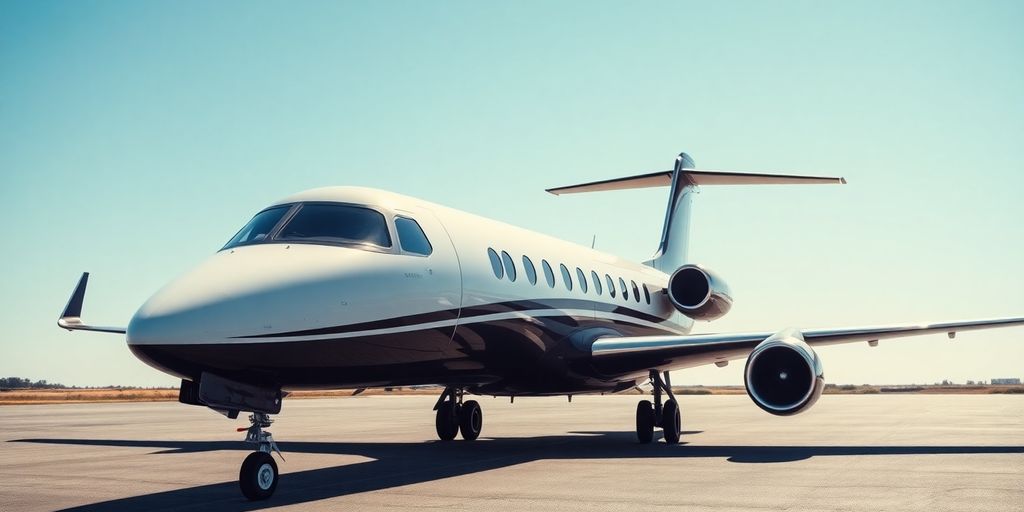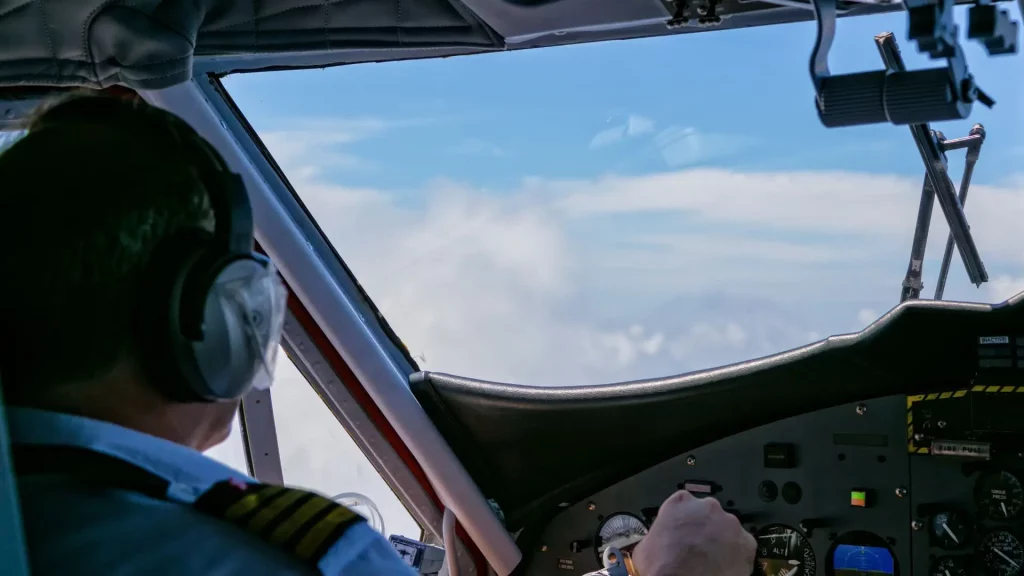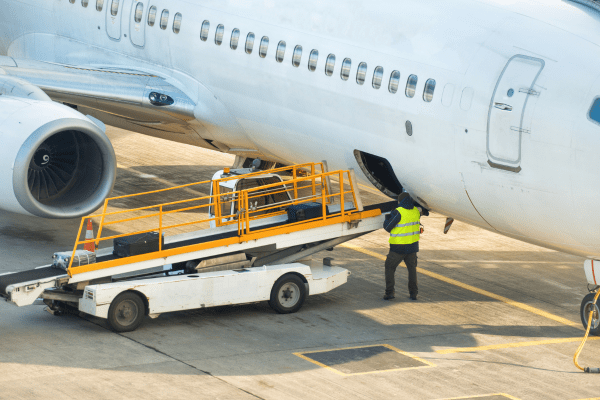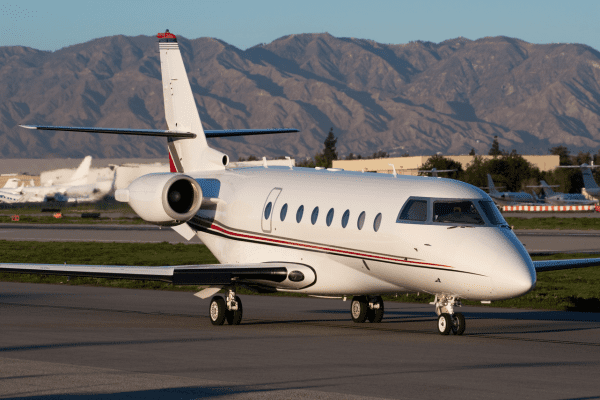Western Australia faces some serious weather challenges, from raging storms and floods to the threat of bushfires. These extreme conditions can really disrupt business operations, making it tough for industries to keep things running smoothly. Thankfully, air charters in extreme weather provide a vital lifeline, helping businesses transport essential goods and services quickly and efficiently. This article explores how air charters are essential for maintaining operations during these challenging times, focusing on their role in emergency response and the benefits they offer to various industries.
Key Takeaways
- Extreme weather in Western Australia can severely impact business operations.
- Air charters provide rapid transport of essential supplies during crises.
- Industries like mining, construction, and healthcare rely on air charters for logistics.
- Customised air charter solutions ensure timely deliveries even in tough conditions.
- Building strong relationships with air charter partners is key for effective emergency planning.
Understanding Extreme Weather Challenges in Western Australia

Western Australia, with its vast landscapes and diverse climates, faces a unique set of extreme weather challenges. From intense cyclones in the north to devastating bushfires in the south and disruptive floods across inland regions, businesses must be prepared. These events can significantly impact operations, supply chains, and the safety of personnel. So, what are the main aviation weather challenges? Let’s break it down.
Impact of Storms and Floods on Operations
Storms and floods can cause widespread damage to infrastructure, including roads, railways, and ports. This can lead to significant delays and disruptions to the movement of goods and people. Coastal communities are particularly vulnerable to cyclones, which can bring destructive winds, heavy rainfall, and storm surges. Inland areas are prone to flash flooding, which can isolate communities and damage property. The economic impact can be substantial, affecting industries such as mining, agriculture, and tourism.
Consider these points:
- Road closures due to flooding can halt transport of essential supplies.
- Damage to port facilities can disrupt exports and imports.
- Power outages can affect business operations and communication networks.
Bushfire Risks and Their Consequences
Bushfires are a recurring threat in Western Australia, particularly during the hot, dry summer months. These fires can spread rapidly, destroying property, infrastructure, and natural resources. Smoke from bushfires can also affect air quality, posing health risks to communities and disrupting air freight in WA. The consequences of bushfires can be devastating, both economically and socially.
Bushfires not only cause immediate damage but also have long-term effects on the environment and the economy. Recovery efforts can take years, and the risk of future fires remains a constant concern.
Navigating Supply Chain Disruptions
Extreme weather events can severely disrupt supply chains, making it difficult for businesses to get the goods and services they need. Road and rail closures, port disruptions, and airport closures can all contribute to delays and shortages. This can have a ripple effect throughout the economy, affecting businesses of all sizes. Planning and preparation are key to mitigating the impact of supply chain disruptions. Businesses need to identify alternative routes, diversify their suppliers, and build up buffer stocks of essential goods. Complete Aviation offers reliable air charter services in Perth, emphasising safety, compliance, and customer satisfaction. Their experienced team ensures efficient and personalised travel solutions, making them a top choice for both business and leisure flights.
Here’s a simple table illustrating potential disruptions:
| Weather Event | Disruption | Impact |
| Cyclone | Port closures | Export delays |
| Flood | Road closures | Supply shortages |
| Bushfire | Airport closures | Travel disruptions |
The Role of Air Charters in Emergency Response
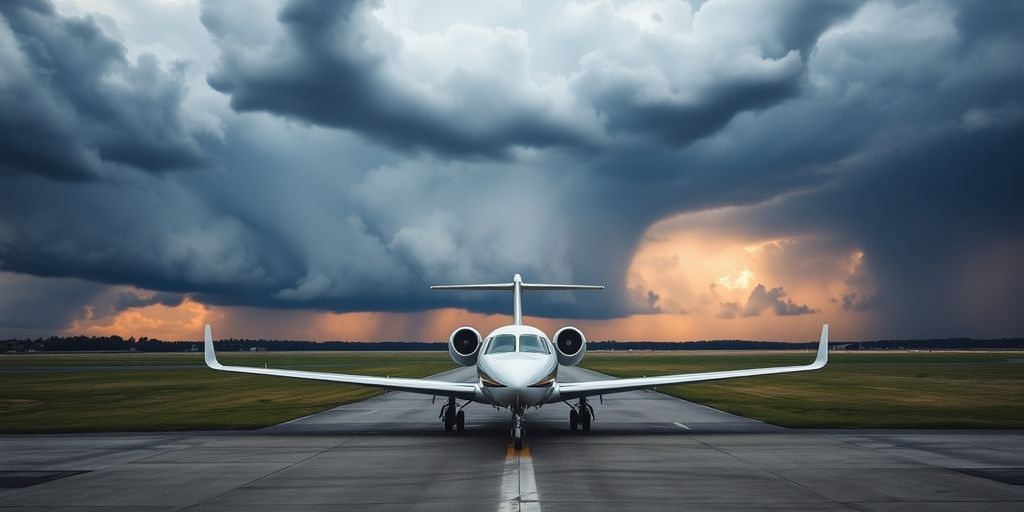
When disaster strikes in Western Australia, the ability to respond quickly and effectively is paramount. Traditional transport methods can be severely hampered by road closures, damaged infrastructure, and the sheer scale of the affected area. That’s where emergency air transport services come into their own, providing a lifeline when other options are off the table.
Rapid Transport of Essential Cargo
In an emergency, time is of the essence. Whether it’s medical supplies, specialised equipment, or personnel, getting resources to where they’re needed fast can make all the difference. Air charters offer a significant advantage by bypassing the limitations of ground transport. This is especially true in WA, where vast distances and challenging terrain can turn a simple journey into a logistical nightmare. Air cargo charters are a great solution for time-sensitive logistics.
Supporting Disaster Relief Efforts
Air charters play a vital role in supporting broader disaster relief efforts. They can be used to:
- Evacuate people from danger zones.
- Transport search and rescue teams.
- Deliver food, water, and shelter to affected communities.
- Facilitate communication by bringing in satellite phones and other equipment.
- Conduct aerial assessments of damage to infrastructure.
The flexibility of air charters means they can be tailored to meet the specific needs of each emergency situation. This adaptability is invaluable when dealing with the unpredictable nature of natural disasters.
Case Studies of Successful Air Charter Deployments
Consider the impact of a cyclone on a remote mining community. Roads are cut off, and essential supplies are running low. Using chartered planes for urgent deliveries, a mining company can quickly bring in food, water, medical personnel, and equipment to keep the operation running and support the affected workers and their families. Or, imagine a bushfire threatening a small town. Charter flights for urgent deliveries can be used to evacuate residents, transport firefighters, and deliver water and retardant to help contain the blaze. These are just a couple of examples of how air charters can make a tangible difference in emergency situations.
Industries Benefiting from Air Charters in Extreme Weather
Extreme weather events in Western Australia can throw a real spanner in the works for many industries. When roads are flooded, bushfires rage, or cyclones hit, getting essential supplies and personnel where they need to be become a massive headache. That’s where air charters come into their own, providing a lifeline for businesses that can’t afford to wait.
Mining Sector Resilience
WA’s mining sector is a powerhouse, but it’s often located in remote areas that are particularly vulnerable to extreme weather. Air charters ensure that operations can continue with minimal disruption.
- Critical equipment and parts can be flown in quickly to avoid costly downtime.
- Specialist personnel can be transported to sites when roads are impassable.
- Emergency medical evacuations can be carried out swiftly, ensuring the safety of workers.
Air charters aren’t just about convenience; they’re about maintaining productivity and ensuring the safety of personnel in an industry that’s vital to the WA economy.
Construction Industry Logistics
The construction industry faces similar challenges, especially when working on projects in regional or remote locations. Getting materials and workers to site on time is crucial for keeping projects on schedule and within budget. How do you keep construction projects on track? Air charters offer a solution when traditional transport methods are disrupted.
- Time-sensitive materials, like specialised components or equipment, can be delivered rapidly.
- Construction crews can be rotated efficiently, minimising delays caused by road closures.
- Site inspections and assessments can be conducted quickly, even in remote areas.
Remote Health Services Accessibility
For remote communities, access to healthcare is always a concern, but extreme weather can make it even more difficult. Air charters play a vital role in ensuring that people in these areas can get the medical attention they need. What happens when remote communities are cut off? Air charters can provide a solution.
- Medical personnel can be flown in to provide on-site care.
- Patients can be transported to hospitals or specialist clinics for treatment.
- Essential medical supplies and equipment can be delivered quickly to remote health centres.
These are just a few examples of how air charters support WA industries relying on air freight during extreme weather events. By providing a fast, reliable, and flexible transport solution, air charters help businesses and communities to weather the storm and keep things running as smoothly as possible.
Reliability and Speed of Air Charter Services
When extreme weather hits Western Australia, businesses can’t afford delays. That’s where the reliability and speed of air charter services become so important. It’s about more than just getting from A to B; it’s about keeping operations running, supporting emergency responses, and ensuring people get the help they need, fast.
Customised Solutions for Unique Needs
Air charter services aren’t a one-size-fits-all deal. They shine because they can be tailored to fit specific requirements. Need to get a specialised piece of equipment to a remote mine site? Got a team of engineers that need to reach a flood-affected area urgently? Air charters can be configured to handle unusual cargo, specific timeframes, and tricky locations. This flexibility is a game-changer when standard transport options just won’t cut it. FIFO air charter services are a great example of this.
Real-Time Tracking and Communication
In a crisis, knowing where your cargo or personnel are is vital. Modern air charter services offer real-time tracking, so you can monitor the progress of your flight every step of the way. This transparency, combined with clear communication channels, means you’re always in the loop and can make informed decisions as conditions change. This level of control is invaluable when dealing with the unpredictable nature of extreme weather events.
Ensuring Timely Deliveries During Crises
Time is of the essence during a crisis. Whether it’s delivering medical supplies, getting essential equipment to a construction site, or evacuating people from a dangerous area, the speed of air charter services can make a real difference. Unlike scheduled flights, air charters aren’t bound by fixed routes or timetables, meaning they can often reach destinations much faster, minimising downtime and potentially saving lives. When you need reliable cargo air travel, air charters are the way to go.
Air charter services provide a critical advantage during extreme weather events by offering speed, flexibility, and reliability that traditional transport methods simply can’t match. This ensures businesses can maintain operations, emergency services can respond effectively, and communities can receive the support they need when it matters most.
Planning for Extreme Weather with Air Charter Partners
Extreme weather events in Western Australia can throw a real spanner in the works for businesses. But with some smart planning and the right air charter partner, you can minimise disruptions and keep things moving. It’s all about being prepared and having a solid plan B (or even C!).
Developing Contingency Plans
Contingency plans are your best mate when the weather turns nasty. Think of them as your ‘what if’ scenarios. What if the roads are flooded? What if the airport is closed? A good contingency plan outlines alternative transport routes, communication protocols, and backup locations. When developing these plans with your air charter provider, consider:
- Identifying critical goods and personnel that need to be moved urgently.
- Establishing clear communication channels between your team and the charter company.
- Having alternative landing sites mapped out in case of airport closures.
- Regularly reviewing and updating the plan as weather patterns change.
Having a well-thought-out contingency plan means you’re not scrambling at the last minute. It allows for quick decision-making and minimises downtime, which is crucial for business continuity during storms and floods.
Building Long-Term Relationships
Think of your air charter company as more than just a service provider; they’re your partner in navigating extreme weather. Building a strong, long-term relationship means they understand your business, your needs, and your priorities. This allows them to provide more tailored and responsive solutions when things get tough. A good relationship involves:
- Regular communication and feedback.
- Shared understanding of your operational requirements.
- Trust and transparency in all dealings.
- Collaborative problem-solving during crises.
Evaluating Charter Service Providers
Not all air charter companies are created equal. When choosing a provider, it’s important to do your homework and make sure they’re up to the task of transporting critical goods during extreme weather. Consider these factors:
- Experience: How long have they been operating in Western Australia, and what’s their track record in dealing with extreme weather events?
- Fleet: Do they have a diverse fleet of aircraft to suit different cargo and passenger needs?
- Safety: What safety certifications and protocols do they have in place?
- Response Time: How quickly can they mobilise aircraft and crew in an emergency?
- Reputation: What do other businesses say about their services? Check online reviews and ask for references.
By carefully evaluating potential partners, you can ensure you’re working with a reliable and capable provider who can help you weather any storm. Ultimately, planning ahead with experienced air charters in extreme weather is an investment in your business’s resilience.
Sustainability in Air Charter Operations
It’s no secret that aviation has an impact on the environment. But what are air charter companies doing about it? Turns out, quite a bit. Sustainability is becoming a bigger focus, driven by customer demand and a growing awareness of our environmental footprint. It’s not just about feeling good; it’s about ensuring the long-term viability of the industry, especially when providing mining and energy supply chain solutions.
Adoption of Sustainable Aviation Fuels
Sustainable Aviation Fuels (SAF) are a big deal. They’re produced from renewable sources, like algae, waste biomass, and even used cooking oil. The beauty of SAF is that it can significantly reduce carbon emissions compared to traditional jet fuel. Many air charter operators are starting to incorporate SAF into their fuel mix, even though it can be more expensive. It’s a step in the right direction, showing a commitment to lowering their environmental impact. The challenge is scaling up production and making SAF more readily available and cost-competitive. This will be key for wider adoption across the industry, especially for frequent charter flight logistics.
Reducing Carbon Footprint
Beyond SAF, there are other ways air charter companies are working to shrink their carbon footprint. These include:
- Optimising flight routes: Using advanced technology to find the most fuel-efficient paths.
- Investing in fuel-efficient aircraft: Newer planes are designed to burn less fuel.
- Reducing weight: Even small changes, like using lighter materials in the cabin, can make a difference.
- Carbon offsetting programmes: Investing in projects that remove carbon dioxide from the atmosphere to balance out emissions.
It’s about looking at every aspect of the operation and finding ways to be more efficient. From ground operations to in-flight procedures, there are opportunities to reduce waste and conserve resources. It’s a continuous process of improvement.
Innovations in Eco-Friendly Air Travel
The future of air travel is looking greener. We’re seeing exciting innovations like electric and hybrid-electric aircraft, though they’re still in the early stages of development. These technologies hold the potential to revolutionise the industry and drastically reduce emissions. For now, air charter companies are exploring other eco-friendly options, such as:
- Using electric ground support equipment.
- Implementing paperless flight decks.
- Partnering with sustainable suppliers.
These efforts, combined with the increasing use of SAF and carbon offsetting, are helping to make air charter services a more sustainable choice, particularly important for time-sensitive business continuity flights. It’s all about balancing the need for speed and reliability with a commitment to protecting the environment.
Future Trends in Air Charter Services
The air charter industry is constantly evolving, driven by technological advancements, changing customer needs, and the increasing impact of climate change. So, what does the future hold for air charters in Australia?
Technological Advancements in Aviation
Technology is set to revolutionise air charter services. We’re already seeing the beginnings of this with more efficient aircraft, improved navigation systems, and better communication technologies. Expect to see even more integration of AI and automation in flight operations, potentially leading to reduced costs and increased safety. Drones could also play a bigger role in cargo transport, especially for remote locations. The integration of advanced technologies will be key to air charter safety and efficiency.
Evolving Customer Expectations
Customers are demanding more from air charter services than ever before. It’s not just about getting from A to B; it’s about the entire experience. Passengers expect personalised service, seamless booking processes, and real-time updates. Businesses want flexible solutions that can adapt to their changing needs. Sustainability is also becoming a major factor, with customers increasingly seeking eco-friendly options. Meeting these evolving expectations will require air charter companies to be innovative and customer centric.
The Impact of Climate Change on Air Travel
Climate change is already affecting air travel, and its impact is only going to increase. Extreme weather events, such as cyclones and floods, are becoming more frequent and intense, disrupting flight schedules and posing safety risks. The industry needs to adapt to these challenges by developing more resilient infrastructure and operational procedures. There’s also growing pressure to reduce the carbon footprint of aviation. This could lead to increased adoption of sustainable aviation fuels and other eco-friendly technologies.
The air charter industry is at a turning point. By embracing technological advancements, meeting evolving customer expectations, and addressing the challenges of climate change, it can continue to provide a vital service to businesses and communities across Western Australia.
Here are some key areas to watch:
- Electric and hybrid aircraft: These technologies are still in their early stages, but they have the potential to significantly reduce emissions and noise pollution.
- Sustainable aviation fuels (SAF): SAF are made from renewable sources, such as algae and waste biomass. They can reduce carbon emissions by up to 80% compared to conventional jet fuel.
- Advanced air traffic management systems: These systems use technology to optimise flight paths and reduce delays, leading to lower fuel consumption and emissions.
As we look ahead, air charter services are set to change in exciting ways. New technology will make flying easier and safer, while more people will want to travel on their own terms. This means more options for private flights and better services for everyone. If you’re curious about how these trends can benefit you, visit our website for more information and to explore your options!
Final Thoughts on Air Charters and Extreme Weather
In summary, extreme weather in Western Australia can really throw a spanner in the works for businesses. But with CASAIR air charters, companies can keep things moving, even when the weather’s at its worst. Whether it’s getting vital supplies to remote mining sites or ensuring construction projects don’t stall, these charters provide a quick and reliable solution. Industries like mining, construction, and healthcare are seeing the benefits of having a flexible air transport partner. So, if you’re in a sector that relies on timely deliveries, it’s worth considering how a responsive air charter service can help you stay on track, no matter what Mother Nature throws your way.
Frequently Asked Questions
What types of extreme weather affect Western Australia?
Western Australia faces many extreme weather events like storms, floods, and bushfires. These can disrupt operations and make it hard for businesses to function.
How can air charters help during emergencies?
Air charters can quickly transport essential goods and supplies to areas affected by disasters. This helps businesses and communities get the help they need fast.
Which industries benefit most from air charters in extreme weather?
Industries like mining, construction, and remote health services gain a lot from air charters. They rely on quick transport to keep their operations running smoothly.
What makes air charter services reliable and fast?
Air charter services are known for their speed and reliability. They offer customised solutions, real-time tracking, and good communication to ensure timely deliveries.
Why is planning with air charter partners important?
Planning with air charter partners helps businesses prepare for extreme weather. It allows them to develop backup plans and build strong relationships with service providers.
How are air charter operations becoming more sustainable?
Air charter companies are adopting sustainable aviation fuels and finding ways to reduce their carbon footprint, making air travel more eco-friendly.


